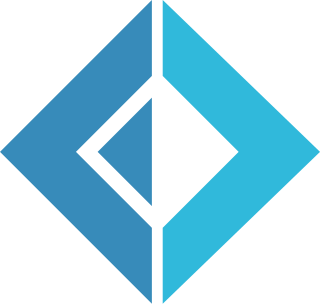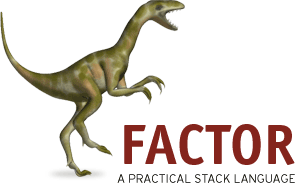Overview
Claire is a general-purpose programming language, best suited to application software requiring sophisticated data modeling, rule processing or problem solving. WebClaire adds extensions for fuller integration with the operating system and for programming web applications.
Though Claire can be used for complete projects, it is designed to integrate smoothly with C++, Java or Go.
The key set of features that distinguishes Claire from other programming languages has been dictated by experience in solving complex optimization problems. Two features not found in other mixed functional/object-oriented languages, such as OCaml, Scala and F#, are versioning and production rules.
Versions can be viewed as a stack of snapshots of some part of the system, which can be made as large (for expressiveness) or small (for efficiency) as necessary. Creation and roll-back of versions permit backtracking, as found in logic programming, though Claire's backtracking may cover any user-defined structure rather than just a set of logic variables.
A production rule in Claire is composed of an event, a condition and a response to be evaluated if the condition is satisfied. An event may be any change in an object's slot or the instantiation of a class, and a response may itself set off further events. Such production rules are especially useful in describing reactive algorithms, such as those for constraint propagation.
Claire was created as a successor to LAURE, an expressive but complex language designed by Caseau in the 1980s that combined many paradigms. Claire was intended to be both easier to learn than its predecessor and to impose no performance overhead relative to C++; it is thus a much smaller language, omitting features such as constraints and deductive rules, and is closer to C in spirit and syntax. Its main users in industry have been the Bouygues and Thales groups. The new CLAIRE 4 release bring both a new level of reliability - borrowing of Go's strength as the underlying language, and improved performance both for the compiler and interpreter.

Erlang is a general-purpose, concurrent, functional high-level programming language, and a garbage-collected runtime system. The term Erlang is used interchangeably with Erlang/OTP, or Open Telecom Platform (OTP), which consists of the Erlang runtime system, several ready-to-use components (OTP) mainly written in Erlang, and a set of design principles for Erlang programs.

Java is a high-level, class-based, object-oriented programming language that is designed to have as few implementation dependencies as possible. It is a general-purpose programming language intended to let programmers write once, run anywhere (WORA), meaning that compiled Java code can run on all platforms that support Java without the need to recompile. Java applications are typically compiled to bytecode that can run on any Java virtual machine (JVM) regardless of the underlying computer architecture. The syntax of Java is similar to C and C++, but has fewer low-level facilities than either of them. The Java runtime provides dynamic capabilities that are typically not available in traditional compiled languages.
In programming language theory, lazy evaluation, or call-by-need, is an evaluation strategy which delays the evaluation of an expression until its value is needed and which also avoids repeated evaluations.
ML is a functional programming language. It is known for its use of the polymorphic Hindley–Milner type system, which automatically assigns the data types of most expressions without requiring explicit type annotations, and ensures type safety; there is a formal proof that a well-typed ML program does not cause runtime type errors. ML provides pattern matching for function arguments, garbage collection, imperative programming, call-by-value and currying. While a general-purpose programming language, ML is used heavily in programming language research and is one of the few languages to be completely specified and verified using formal semantics. Its types and pattern matching make it well-suited and commonly used to operate on other formal languages, such as in compiler writing, automated theorem proving, and formal verification.

Python is a high-level, general-purpose programming language. Its design philosophy emphasizes code readability with the use of significant indentation.

Ruby is an interpreted, high-level, general-purpose programming language which supports multiple programming paradigms. It was designed with an emphasis on programming productivity and simplicity. In Ruby, everything is an object, including primitive data types. It was developed in the mid-1990s by Yukihiro "Matz" Matsumoto in Japan.

Scheme is a dialect of the Lisp family of programming languages. Scheme was created during the 1970s at the MIT Computer Science and Artificial Intelligence Laboratory and released by its developers, Guy L. Steele and Gerald Jay Sussman, via a series of memos now known as the Lambda Papers. It was the first dialect of Lisp to choose lexical scope and the first to require implementations to perform tail-call optimization, giving stronger support for functional programming and associated techniques such as recursive algorithms. It was also one of the first programming languages to support first-class continuations. It had a significant influence on the effort that led to the development of Common Lisp.
OCaml is a general-purpose, high-level, multi-paradigm programming language which extends the Caml dialect of ML with object-oriented features. OCaml was created in 1996 by Xavier Leroy, Jérôme Vouillon, Damien Doligez, Didier Rémy, Ascánder Suárez, and others.
Programming languages can be grouped by the number and types of paradigms supported.

F# is a general-purpose, strongly typed, multi-paradigm programming language that encompasses functional, imperative, and object-oriented programming methods. It is most often used as a cross-platform Common Language Infrastructure (CLI) language on .NET, but can also generate JavaScript and graphics processing unit (GPU) code.
In programming language theory and type theory, polymorphism is the use of a single symbol to represent multiple different types.
In computer science, pattern matching is the act of checking a given sequence of tokens for the presence of the constituents of some pattern. In contrast to pattern recognition, the match usually has to be exact: "either it will or will not be a match." The patterns generally have the form of either sequences or tree structures. Uses of pattern matching include outputting the locations of a pattern within a token sequence, to output some component of the matched pattern, and to substitute the matching pattern with some other token sequence.

Factor is a stack-oriented programming language created by Slava Pestov. Factor is dynamically typed and has automatic memory management, as well as powerful metaprogramming features. The language has a single implementation featuring a self-hosted optimizing compiler and an interactive development environment. The Factor distribution includes a large standard library.

Racket is a general-purpose, multi-paradigm programming language and a multi-platform distribution that includes the Racket language, compiler, large standard library, IDE, development tools, and a set of additional languages including Typed Racket, Swindle, FrTime, Lazy Racket, R5RS & R6RS Scheme, Scribble, Datalog, Racklog, Algol 60 and several teaching languages.

The syntax of the Python programming language is the set of rules that defines how a Python program will be written and interpreted. The Python language has many similarities to Perl, C, and Java. However, there are some definite differences between the languages. It supports multiple programming paradigms, including structured, object-oriented programming, and functional programming, and boasts a dynamic type system and automatic memory management.
Haxe is a high-level cross-platform programming language and compiler that can produce applications and source code for many different computing platforms from one code-base. It is free and open-source software, released under the MIT License. The compiler, written in OCaml, is released under the GNU General Public License (GPL) version 2.

Pure, successor to the equational language Q, is a dynamically typed, functional programming language based on term rewriting. It has facilities for user-defined operator syntax, macros, arbitrary-precision arithmetic, and compiling to native code through the LLVM. Pure is free and open-source software distributed (mostly) under the GNU Lesser General Public License version 3 or later.
Dart is a programming language designed by Lars Bak and Kasper Lund and developed by Google. It can be used to develop web and mobile apps as well as server and desktop applications.

Nim is a general-purpose, multi-paradigm, statically typed, compiled high-level systems programming language, designed and developed by a team around Andreas Rumpf. Nim is designed to be "efficient, expressive, and elegant", supporting metaprogramming, functional, message passing, procedural, and object-oriented programming styles by providing several features such as compile time code generation, algebraic data types, a foreign function interface (FFI) with C, C++, Objective-C, and JavaScript, and supporting compiling to those same languages as intermediate representations.










